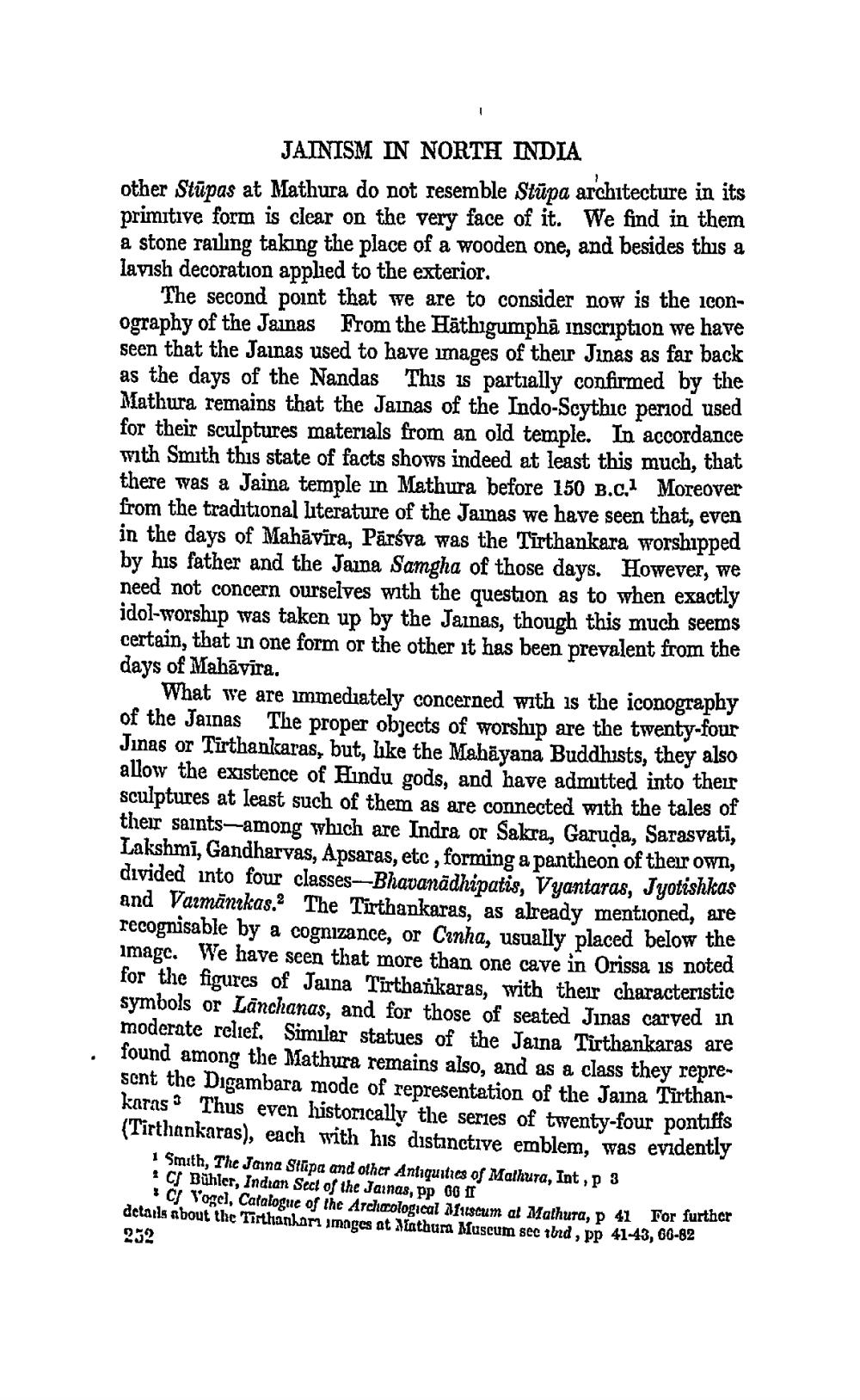________________ JAINISM IN NORTH INDIA other Stupas at Mathura do not resemble Stupa architecture in its primitive form is clear on the very face of it. We find in them a stone railing taking the place of a wooden one, and besides this a lavish decoration applied to the exterior. The second point that we are to consider now is the iconography of the Jainas From the Hathigumpha inscription we have seen that the Jainas used to have images of their Jinas as far back as the days of the Nandas This is partially confirmed by the Mathura remains that the Jainas of the Indo-Scythic period used for their sculptures materials from an old temple. In accordance with Smith this state of facts shows indeed at least this much, that there was a Jaina temple in Mathura before 150 B.C. Moreover from the traditional literature of the Jamas we have seen that, even in the days of Mahavira, Parsva was the Tirthankara worshipped by his father and the Jaina Samgha of those days. However, we need not concern ourselves with the question as to when exactly idol-worship was taken up by the Jainas, though this much seems certain, that in one form or the other it has been prevalent from the days of Mahavira, What we are immediately concerned with is the iconography of the Jainas The proper objects of worship are the twenty-four Jinas or Tirthankaras, but, like the Mahayana Buddhists, they also allow the existence of Hindu gods, and have admitted into their sculptures at least such of them as are connected with the tales of their saints-among which are Indra or Sakra, Garuda, Sarasvati, Lakshmi, Gandharvas, Apsaras, etc, forming a pantheon of their own, divided into four classes-Bhavanadhipatis, Vyantaras, Jyotishkas and Varmanikas. The Tirthankaras, as already mentioned, are recognisable by a cognizance, or Cinha, usually placed below the image. We have seen that more than one cave in Orissa is noted for the figures of Jaina Tirthankaras, with their characteristic symbols or Lanchanas, and for those of seated Jinas carved in moderate relief. Similar statues of the Jaina Tirthankaras are found among the Mathura remains also, and as a class they represent the Digambara mode of representation of the Jaina Tirthankaras Thus even historically the series of twenty-four pontiffs (Tirthankaras), each with his distinctive emblem, was evidently 1 Smith, The Jaina Stapa and other Antiquities of Mathura, Int, P 3 : Cf Buhler, Indian Sect of the Jainas, PP 06 I CJ Vogel, Catalogue of the Archaeological Discum al Mathura, p 41 details about the Tirthanhon images at Mathura Muscum sec bud , pp 41-43, 60-82 For further 232




